As we stroll through the Rare and Endangered Botanical Garden at TU’s Jiaojiang Campus and the Introduction and Cultivation Base of Rare and Endangered Plants at TU’s Linhai Campus, as well as the Specialized Garden for Rare and Endangered Plants at Taizhou Botanical Garden, the star plant that catches the eye is undoubtedly Heptacodium miconioides.
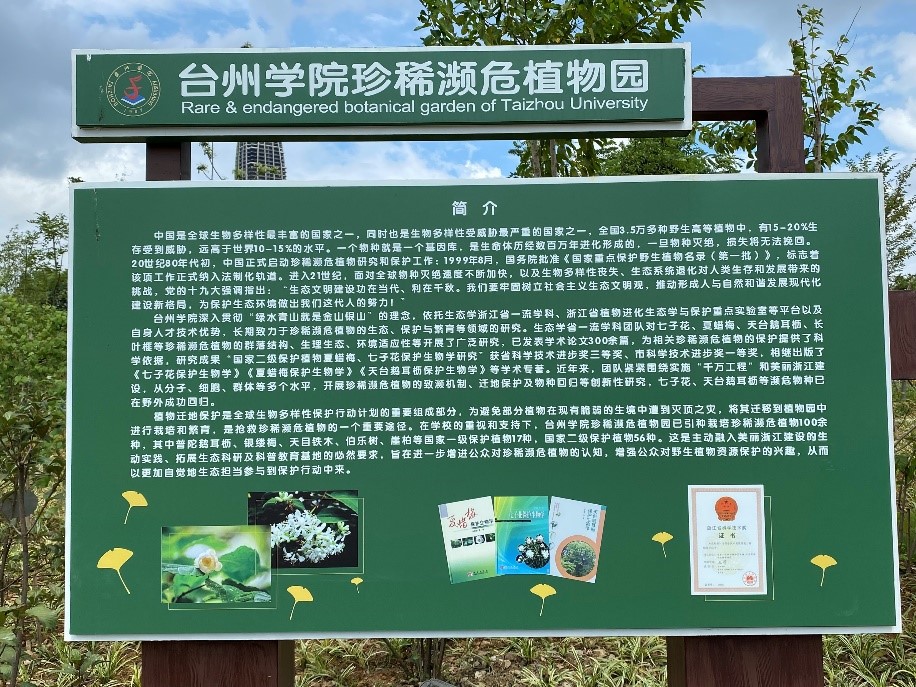
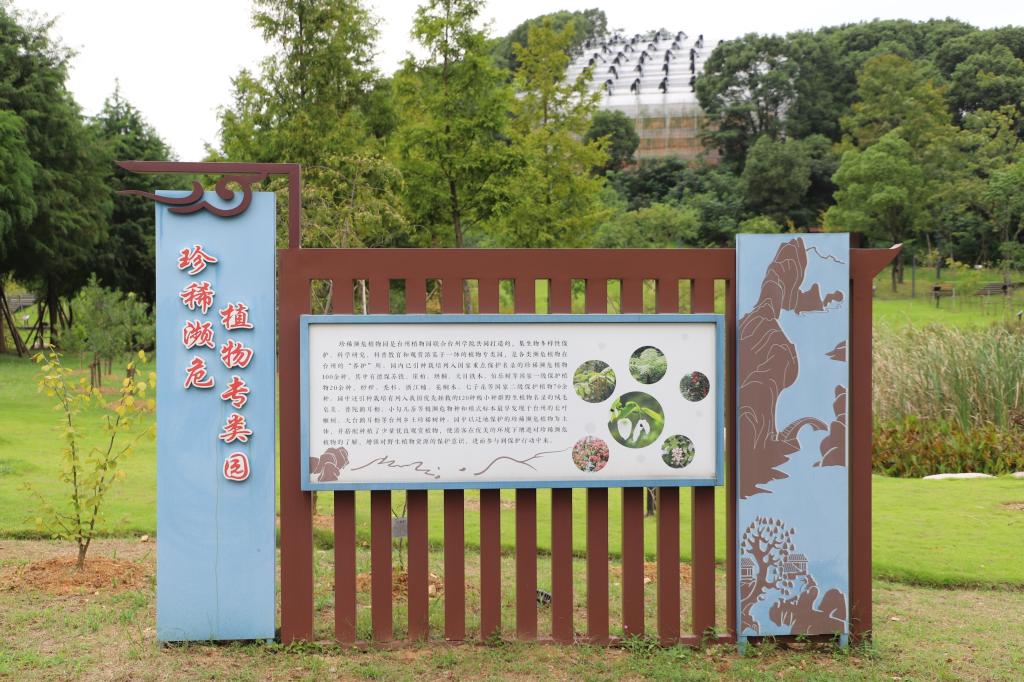
Figure 1: Over 200 endangered plant species, including Heptacodium miconioides, have been collected in TU’s Rare and Endangered Botanical Garden.
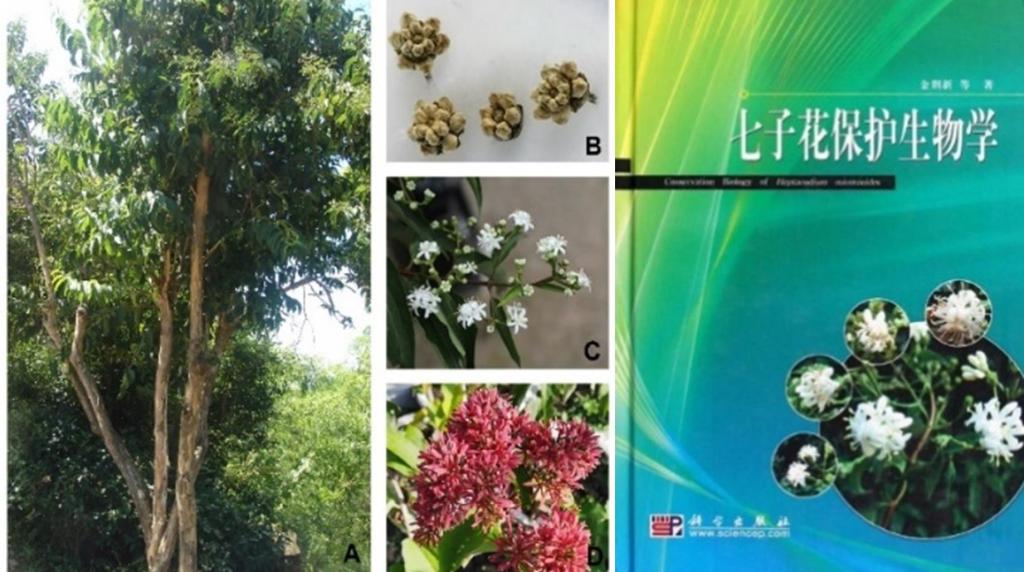
Figure 2: Heptacodium miconioides plants in TU’s Introduction and Cultivation Base of Rare and Endangered Plants at Linhai Campus
Heptacodium miconioides is a deciduous small tree in the family Caprifoliaceae and is a unique monotypic genus native to China. The plant has terminal paniculate inflorescences that are nearly pyramidal, composed of multiple rounds of dense, head-like cymes, each containing a pair of cymes with 3 flowers and a terminal single flower (“top flower”), totaling 7 flowers (see Figure 2), from which the name “Heptacodium” is derived. Due to its unique morphological characteristics, Heptacodium miconioides is widely regarded as an excellent ornamental plant. Its natural distribution area is relatively narrow, scattered only in Zhejiang, Anhui, and Hubei provinces. Heptacodium miconioides has been listed as one of the first batch of national second-class key protected wild plants and has been included in the “China Red Book of Plants—Rare and Endangered Plants (Volume 1)”, “China Species Red List” (endangered species), “China Red List of Biodiversity” (endangered species), key endangered species in the key groups of Chinese angiosperms, priority protected species in the China Biodiversity Conservation Action Plan, and the IUCN Red List of Endangered Species. Professor Jin Zexin’s team has long been engaged in the conservation biology research of Heptacodium miconioides and is considered the authoritative scholar on this plant in China. Professor Jin’s team has made significant breakthroughs in the research on population structure, community species diversity and abundance distribution, endangered mechanisms, and conservation strategies of Heptacodium miconioides (In Figure 2 “Conservation Biology of Heptacodium Miconioides” is a book compiled by Professor Jin Zexin and Professor Li Junmin, published by Science Press).
However, for over a century since its first report by Rehder in 1916, botanists have been troubled by the inability to reconcile its unique morphological characteristics with molecular biological results, making it difficult to determine its systematic position. The inflorescence of this genus is similar to the disc-leaf group of the genus Lonicera, while its ovary and fruit structure resemble those of the genus Abelia, indicating that it is a group between the tribes Caprifolieae and Linnaeeae. Some scholars emphasized classic morphological characteristics and suggested placing Heptacodium in the tribe Linnaeeae, while others emphasized modern molecular biological evidence and tended to classify it within the tribe Caprifolieae. Accurate classification of a species’ systematic position is a prerequisite for effective protection and scientific utilization of the species, and the taxonomic disputes over the genus Heptacodium have severely hindered its conservation and further rational development and utilization. Recently, Professor Hu Jinfeng’s team, in collaboration with Professor Jin Zexin’s team, has published a research paper titled “Major specialized natural products from the endangered plant Heptacodium miconioides, potential medicinal uses and insights into its longstanding unresolved systematic classification” in the authoritative SCI journal Phytochemistry, providing new evidence from the perspective of chemical taxonomy for the systematic position of Heptacodium miconioides in the family Caprifoliaceae. The paper systematically studied the chemical components of Heptacodium miconioides and discovered multiple new compounds. A chemical taxonomic analysis was conducted: the HPLC fingerprint profiles of the flower buds were compared with those of two other abundant Caprifoliaceae plants, namely Lonicera japonica (honeysuckle) and Abelia grandiflora, and a hierarchical cluster analysis was performed (see Figure 3). The results showed that the relationship between the seven-seed flower and honeysuckle was closer, and it should be classified under the honeysuckle subfamily. This result was further confirmed by collinear analysis of secondary metabolite biosynthesis pathway genes in honeysuckle and heptagonium plants (see Figure 4).
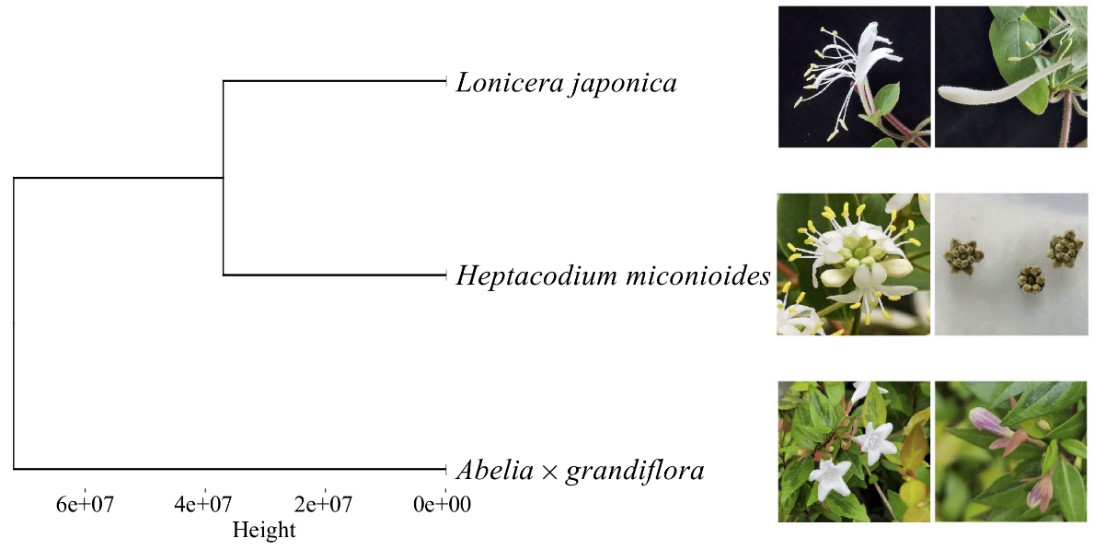
Figure 3: HCA cluster analysis of flower bud chemical components of Lonicera lonicera, Hexaplana macroflorum and Heptacodium miconioides

Figure 4: Gene co-linearity analysis of secondary metabolite biosynthesis pathways in Lonicera and Heptacodium plants
In addition, timely discovery of the medicinal value of the chemical components of endangered plants can actively promote their sustainable use and scientific protection. According to the above isolated chemical components, the activity of a series of targets against major metabolic diseases was studied. The results showed that the two chlorogenic acid compounds had good ATP-citrate lyase (ACL) inhibitory activity (IC50s: 0.11 and 1.10 μM), and the possible interaction mode was illustrated by molecular docking with the ACL enzyme (see Figure 5).
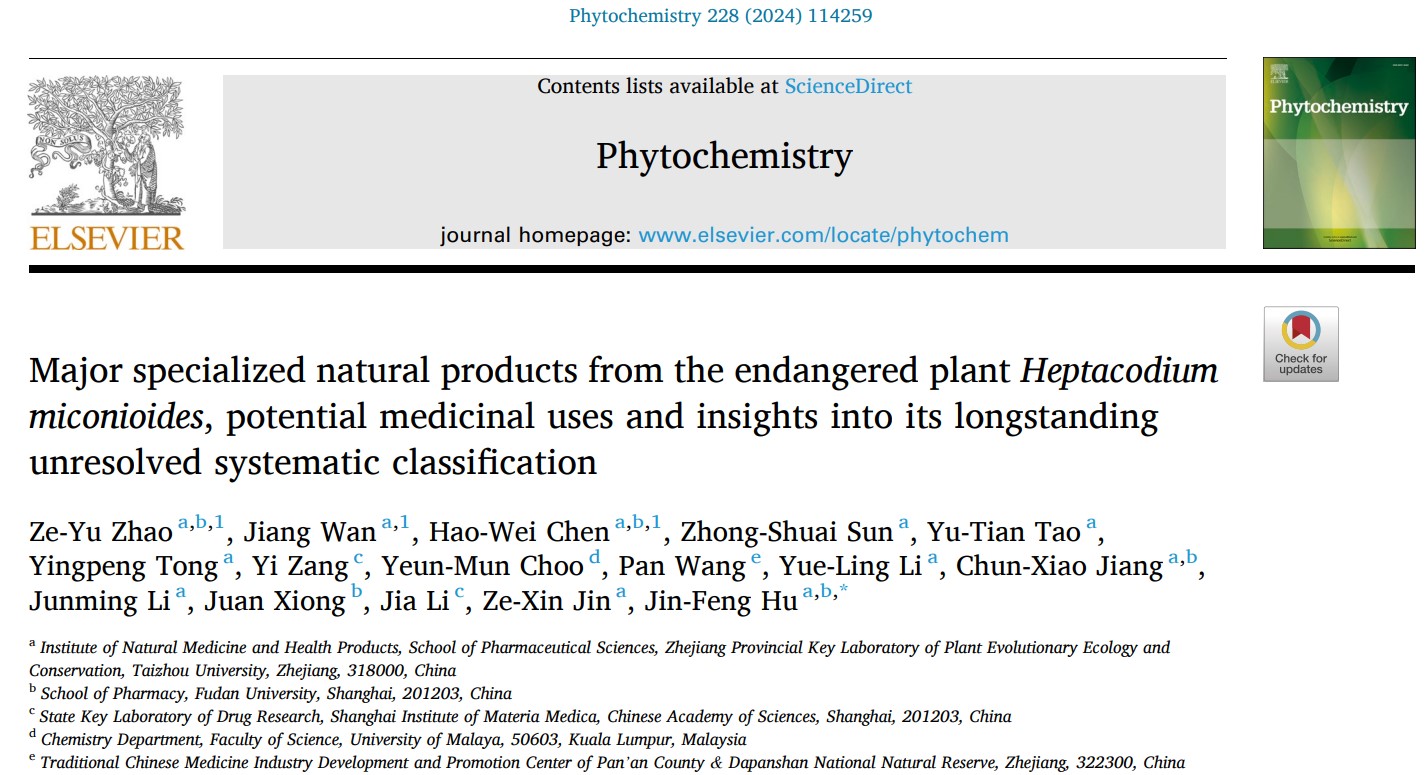
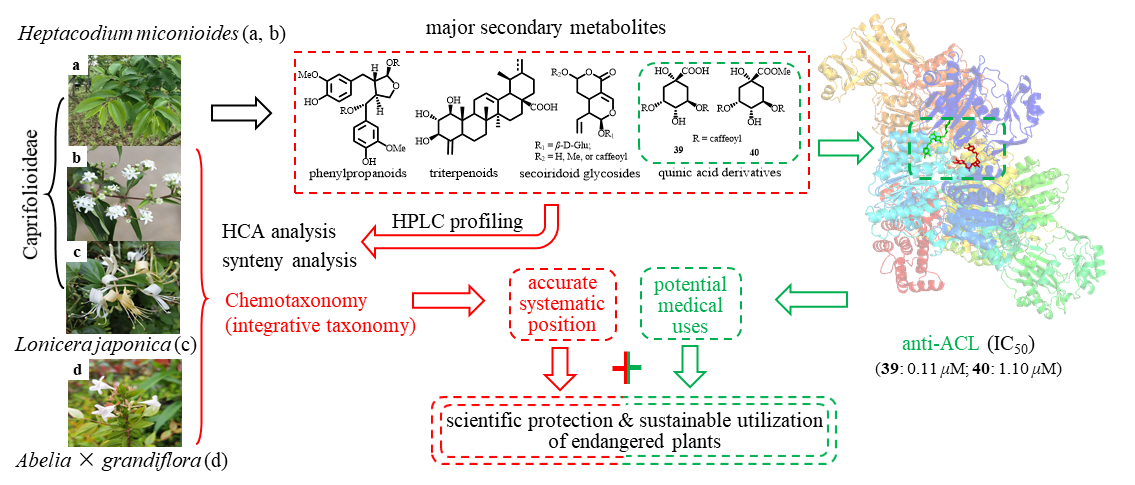
Figure 5: Sustainable development, utilization and scientific protection strategy of Heptacodium miconioides
ACL is a key enzyme in glycometabolism and the biosynthesis of fatty acids and cholesterol, with its substrates and products being critical intermediates in sugar metabolism, while also serving as substrates for fatty acid synthesis. Efficient ACL inhibitors can block the biosynthesis of fatty acids and cholesterol at the source and reduce blood lipids, showing promising prospects for the prevention or treatment of diseases related to dyslipidemia and glucose metabolism disorders (GLMDs). For this target, only one small-molecule drug (bempedoic acid, Nexletol) was approved by the U.S. FDA and the European Medicines Agency in 2020 for the treatment of hypercholesterolemia, marking the first oral non-statin lipid-lowering medication. In 2022, the global market for bempedoic acid was approximately 50 million USD, with an estimated value of 214 million USD by 2029. In fact, during the research and development of small-molecule chemical drugs, the specific chemical structure of the drug molecules plays a crucial role, hence there is an urgent need for structurally novel and diverse small-molecule ligands as potential lead compounds for new GLMDs target inhibitors. It is widely known that natural products have always been an important source for discovering innovative drugs with novel structures and new mechanisms of action. Discovering innovative drug lead compounds against GLMDs from natural products (especially from the unique medicinal resource of rare and endangered plants with relatively high potential for drug development) has significant research value. Natural compounds with unique sources, novel structures, and unique mechanisms of action are expected to gain a place or win in the fierce competition in the research and development of innovative drugs for the prevention and treatment of GLMDs.
Previously, Professor Hu Jinfeng’s team and Professor Jin Zexin’s team have obtained a patent authorization regarding the phytochemical constituents and medicinal value of the Heptapetalum plant—“Use of Heptapetalum Extract in the Preparation of ATP Citrate Lyase Inhibitors” (Patent No. ZL 202011610734.3; Inventors: Hu Jinfeng, Jin Zexin).
The research achievements provide a new approach for actively scientifically protecting, rationally developing, and utilizing the unique endangered plant resources of Heptapetalum in China, and offer new scientific clues for discovering potential novel drug lead compounds against major metabolic diseases. This study is the thirty-seventh part (Part XXXVII) of the “Phytochemical and Biological Studies on Rare and Endangered Plants Endemic to China” series conducted by Professor Hu Jinfeng’s team. This series of research has also laid a solid foundation for two young scholars from Professor Hu’s team to successfully obtain funding from the National Natural Science Foundation of China for Youth Science Fund projects—“Targeted Identification of Aromatic Terpenoids from the Rare and Endangered Plant Magnolia Sinensis and Their Hypolipidemic Activity Research” (No. 82404464, January 1, 2025, to December 31, 2027, Dr. Wan Jiang); and “Discovery of Novel Secondary Metabolites from Endophytic Fungi of Endangered Pinus and Picea Species Induced by Plant Hormones and Their Antibacterial Activity Research” (No. 82404488, January 1, 2025, to December 31, 2027, Dr. Yan Lihong).
The pharmacological research in this achievement received strong support from the team of Research Fellow Li Jia at the Shanghai Institute of Materia Medica, Chinese Academy of Sciences. This research was funded by the Key Project of National Natural Science Foundation of China (No. 21937002), the Zhejiang Provincial Natural Science Foundation (No. LY23H300001), as well as our university.